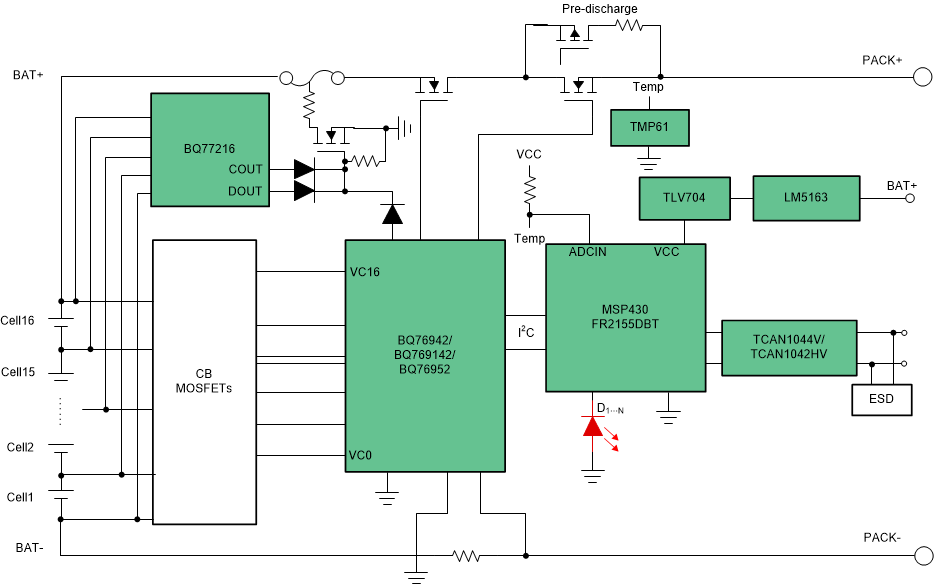TIDUEY5 January 2021
2.1 Block Diagram
Figure 2-1 shows the system diagram. It uses the high-accuracy battery monitor and protector bq769x2 family from TI to monitor each cell voltage, pack current and temperature data, and protect the battery pack from all unusual situations, including: COV, CUV, OT, overcurrent in charge and discharge and short-circuit discharge. It has 3 devices: bq76942 to cover 3s to 10s applications, bq769142 to cover up to 14s applications, and bq76952 to cover up to 16s applications. They are pin-to-pin devices, which makes it very easy to update the design to match different battery cell applications with a limited number of component changes. This design uses an independent 16s secondary protector bq77216 for voltage and temperature protection. This helps the design pass some safety regulations without requiring an MCU to carry out protection work, which saves the safety certifications of the firmware. There is a lower-power MSP430TM MCU MSP430FR2155 which will communicate with the monitor, deal with all system control strategy, and upload all the requested information to the system side. This design has a CAN transceiver TCAN1044V or TCAN1042HV which both integrate level translation via the VIO terminal to allow for interfacing the transceiver IOs directly to 1.8-V, 2.5-V, 3.3-V, or 5-V logic IOs. The TCAN1044V has ±58-V bus fault protection voltage which is good enough to cover 36-V battery packs for e-assisted bikes or e-scooters. The TCAN1042HV is also recommended for 48-V ebike battery packs since it supports as high as ±70-V bus fault protection voltage. Since the MSP430FR2155 does not have an integrated CAN controller, CAN communication is not supported by this design. This design uses a 100-V input, 0.5-A, ultra-low IQ synchronous Buck DC/DC converter LM5163 with a low IQ LDO TLV704 as the auxiliary power. A ±1%, 10-kΩ linear thermistor with positive temperature coefficient and 0603 package TMP61 is utilized to monitor the MOSFET temperature and measured by MCU ADC.
 Figure 2-1 TIDA-010208 Block
Diagram.
Figure 2-1 TIDA-010208 Block
Diagram.